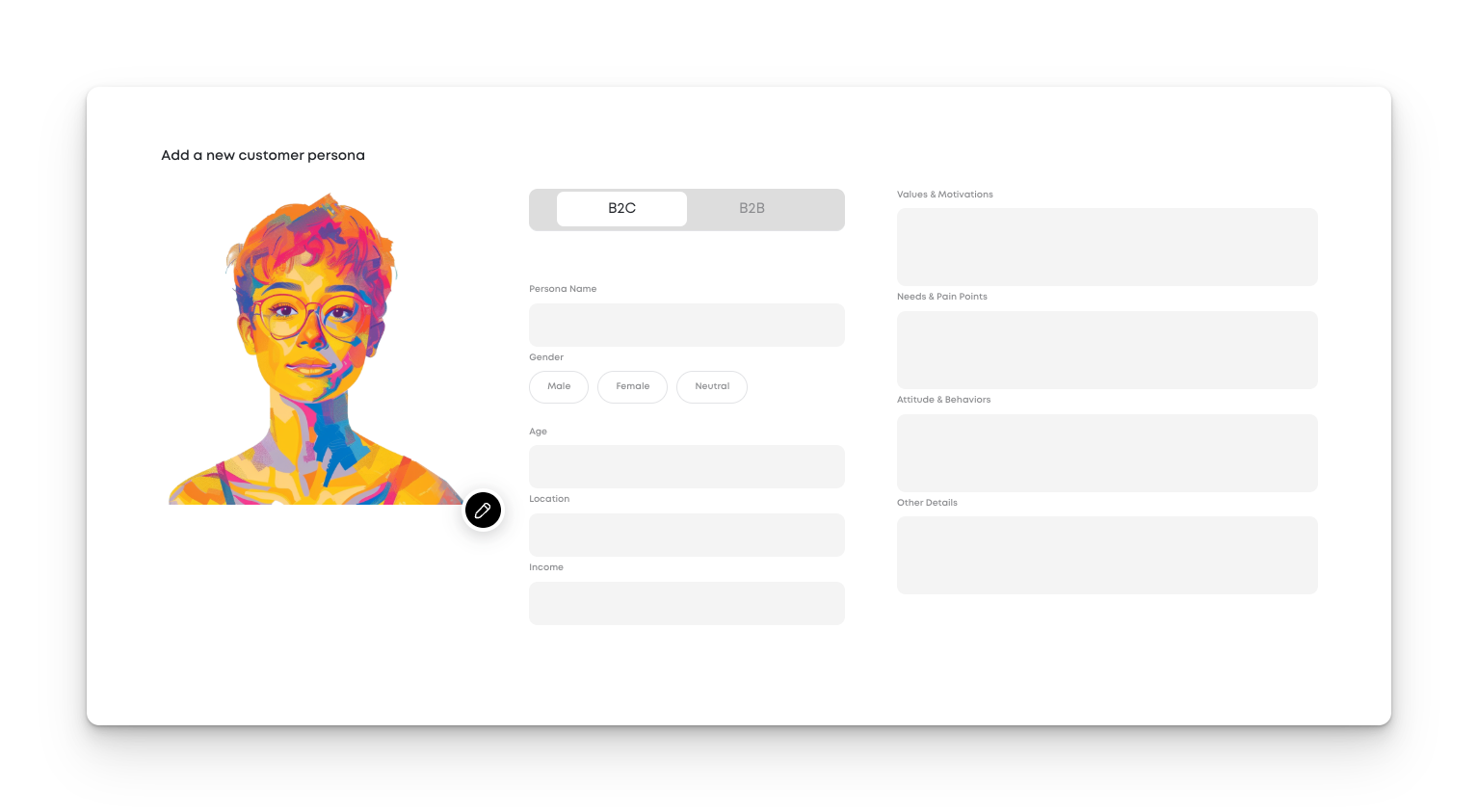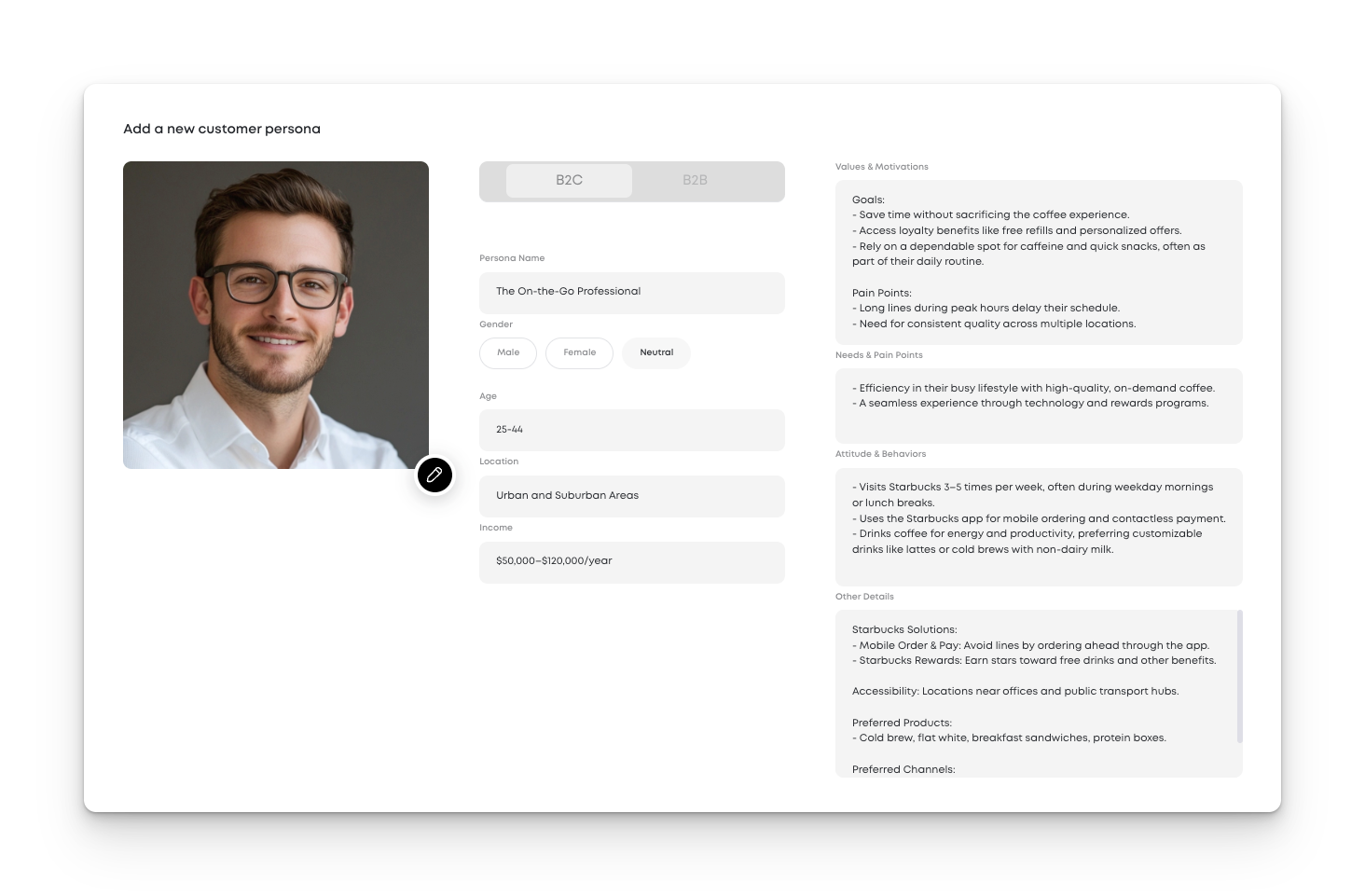How to set up Customer DNA

CustomerDNA™ is a powerful tool that helps you create highly targeted content by leveraging user personas that bring to life your target audiences. By filling out a few key details; like their habits, motivations, and pain points, you give the AI the context it needs to generate content that actually resonates. Whether you're creating ads, product photos, or social posts, CustomerDNA ensures your brand is speaking directly to the right people, in the right way.
This guide will walk you through the simple process of setting up and utilizing CustomerDNA™ to enhance your content creation workflow.
In just a two minutes, you'll learn how to:
- Access the CustomerDNA™ feature
- Create detailed, customized personas
- Use these personas to inform and elevate your content
By following the following steps, you'll be able to tap into the full potential of CustomerDNA™, allowing you to craft more engaging and relevant content for your target audience. Let's begin!
Step 1 - Open CustomerDNA™
From the home screen, navigate to the menu on the left column and hover over “DNA”, then click on "CustomerDNA™".

Step 2 - Create a Persona
Click on the plus sign to create your new persona. Once this is done, a new module will show at the bottom.

Step 3 - Describe Your Persona
In this new screen, you will be able to give your persona a name, a face, and an in-depth description. Let your creativity run free and add as many details as you can to create a complete personality. This will be the core essence of all the content you create for this persona.

Persona name
Tip: Give it a short, memorable name that describes their role or mindset.
Examples:
- “The On-the-Go Professional”
- “Eco-Minded Millennial”
- “Budget-Conscious Mom”
Why it matters: Helps everyone quickly grasp who this persona is without rereading the full profile.
Age
Tip: Use ranges that reflect actual data from your sales, analytics, or surveys. Don’t default to 18–65.
Pro Tip: Choose age ranges that align with major life stages (e.g., 18–24: college age, 25–44: early career/family, etc.).
Location
Tip: Specify urban, suburban, or rural + region or city if relevant.
Example: “Urban and Suburban Areas,” or “Southern California, near college campuses.”
Income
Tip: Align with your pricing strategy. If your product is premium, this number should reflect buying power. You can also describe it in relative terms like “mid-income professionals.”
Goals
Tip: Focus on outcomes they’re trying to achieve, not features.
Examples:
- “Eat healthy without spending hours cooking”
- “Look stylish on a budget”
- “Simplify their daily routine with reliable tools”
Pain Points
Tip: These should connect emotionally. Think frustrations, anxieties, or obstacles.
Examples:
- “Hates standing in line for coffee during peak hours”
- “Gets overwhelmed comparing products online”
Attitudes & Behaviors
Tip: Describe habits that influence how they interact with your product or category.
Examples:
- “Checks social media while waiting in line”
- “Uses apps for nearly every purchase”
- “Does weekly meal planning on Sundays”
Advanced tips
Build layered personas for richer context
- Instead of broad personas (e.g., “Eco-conscious Millennial”), layer demographics with psychographics: values, media habits, purchase frequency, geography.
- Add details like what stresses them out, what excites them - so content tap into real motivations and emotional resonance.
Embed real customer data for authenticity
- Use internal survey data, support tickets, or user interviews to flesh out realistic goals/pain points.
- Use actual quotes or language snippets in persona description - so AI content echoes real-world expressions and tone.
Add behavioral and situational context
- Define when and how your persona uses the product. “Morning coffee ritual at home,” or “Impulse buy at checkout” - this guides tone, format, and CTA timing.






